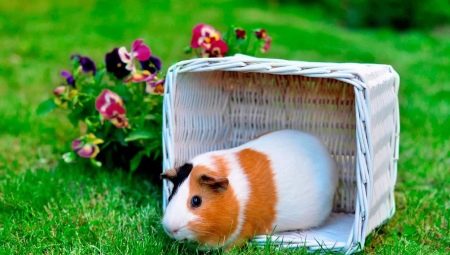Most often, the question of introducing pets arises in families with small children. As a rule, they ask for a kitten or puppy, but as an alternative, parents offer children a few other options for animals, among which guinea pigs are very popular. These unpretentious animals do not take up much space, do not require great attention. And most importantly, children in the process of caring for them instills a sense of accuracy and responsibility.
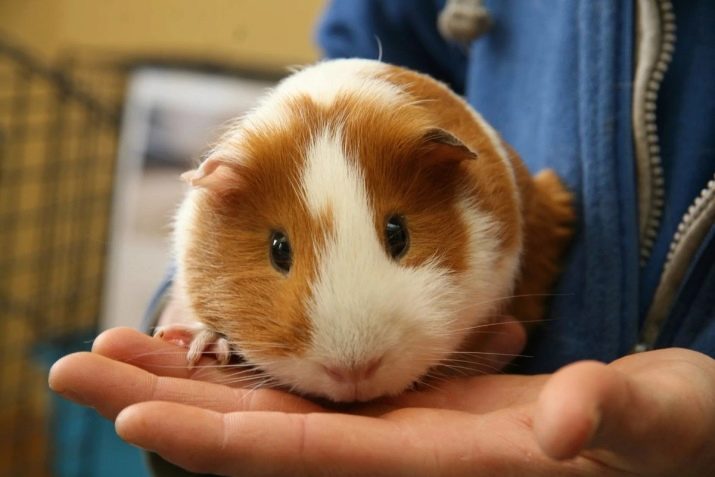
Animal features
According to average indicators, the life expectancy of a guinea pig living at home is 3 years. With maximum care and quality care, its life cycle lasts from 5 to 8 years. In the wild, the animal easily lives 9 and even 10 years.
Despite the name familiar to everyone, this species of pets does not know how to swim. When keeping the animal, this factor must be taken into account.

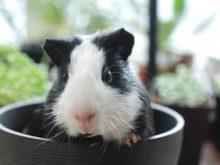
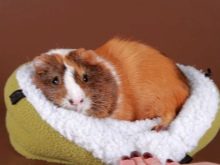
In the zoological sphere, three species of guinea pigs are known.
- Shorthair. The length of the hairline throughout the body is not more than 3 cm.
- Longhair. These animals can boast incredibly long hair, which is 15 cm in length across the entire body. On the muzzle, the hair is slightly shorter, the approximate length of the hairs is 7 cm.
- Rare. This type of guinea pig has appeared relatively recently. Their distinctive feature is the absence of hair on the body, except for the head and legs.
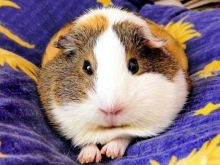


Before you get a guinea pig, you need to familiarize yourself with the habits of this animal. By its characteristics, the animal belongs to daytime inhabitants, they are active only in the first half of the day. In the morning, the pet eats food, after which it is happy to make contact with its owner. In the lunchtime and evening time, the activity of animals noticeably decreases. At night, the animal sleeps.
When acquiring several guinea pigs at once, it is important that they live together in the same territory until the time of purchase. Otherwise, conflicts between unfamiliar animals can occur. Of course, their contractions take place without bloodshed.
The maximum that the warring parties are capable of is trying to scare the opponent with their movements. Watching this process is very interesting. The two conflicting sides stand opposite each other, raise their heads high and begin to gnash their teeth. The time of "fighting" is unlimited, but in the end the weak animal will recede. Quite serious conflicts arise between males dividing the territory or the female.
If from early childhood, guinea pigs were raised together, their mood will always be friendly and will not lead to fights.
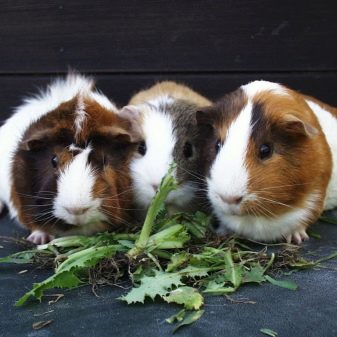

When guinea pigs are kept in large numbers, one can see how brightly the herd feeling is expressed in this species of animals. Each individual male constantly has several groups of females. They do not like strangers and drive them away very quickly.
Guinea pigs are indifferent in nature to other pets. It is enough for them to communicate with their team. Unfortunately, this fact can play a bad role in the life of a rodent, especially if other species of animals live in the house. For example, when meeting with a cat, a frightened animal will try to hide in the darkest corner and bury itself underground. And realizing that he cannot escape, he presses himself against the wall and freezes in one position. In this case, the guinea pig can get a heart attack.
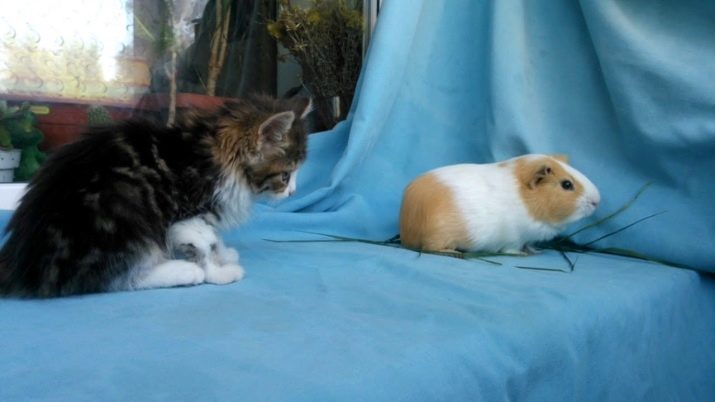
By their nature, guinea pigs are similar to many types of pets in that they engage in coprophagy, that is, eat their bowel movements. The only explanation for this fact is the need for the animal's body to take important trace elements and vitamins that are not learned the first time.
Many parents worry that a guinea pig can bite their child. This is only possible if the child will be careless with the animal. In fact, guinea pigs are very friendly to their owner. They allow you to stroke your face, knocking on the nose.
But as mentioned earlier, they can “turn on” a little aggression, showing dissatisfaction with their actions. For example, if an animal is uncomfortably grabbed, it begins to push the person’s hand away with its head, after which the paws will be used. If the owner does not respond to the demands of the animal to release him, the guinea pig begins to click its teeth. Only after the last hint can she bite her finger slightly. Thus, rodents report that they are tired of manifestations of human feelings.
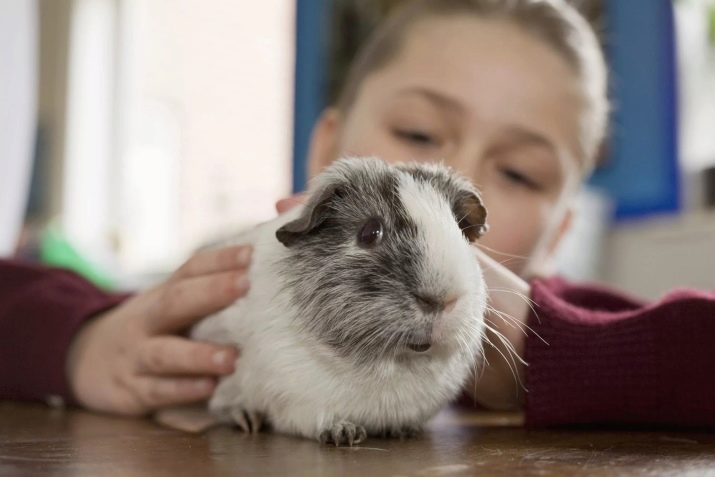
When caring for a guinea pig, it is important to understand the language of the animal. If she begins to bite her fingers lightly, then she asks back to the cell.
At the same time, beating animals is strictly prohibited. Otherwise, she may be frightened and lose confidence in her owner.
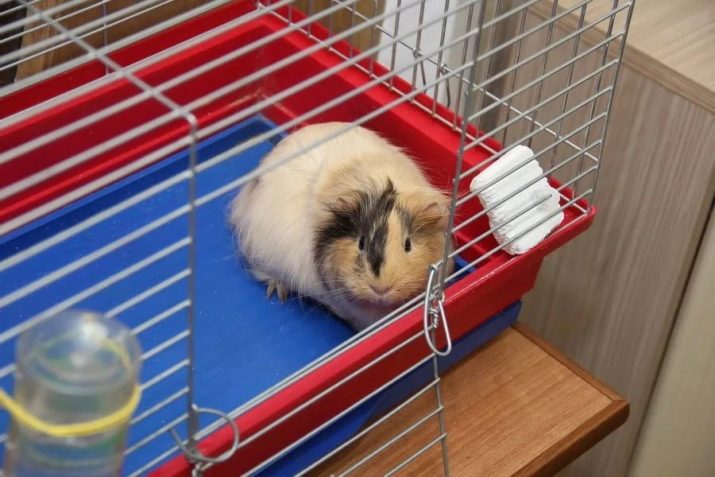
Pros and Cons of Content
Before starting a pet, each person weighs all the pros and cons of caring for an animal. This applies not only to dogs and cats, but also to small rodents, including guinea pigs. To begin with, you should consider the list of advantages in the content of this type of rodent.
- Guinea pigs will become good friends for a small owner. Firstly, they do not take up much space, and secondly, the child develops a sense of responsibility.
- By nature, guinea pigs adapt very easily and quickly to their new habitat. In a short period of time, they get used to the new nickname and begin to respond to the conditional signal of the owner.
- Guinea pigs are non-aggressive animals. Only with light snacks do they show that they don’t like something.
- These rodents do not pay attention to other domestic animals.
- Guinea pigs are not picky about food. For their feeding, there is no need to purchase special delicacies or prepare delicious dishes.
- Unlike dogs, which many children so dream of, guinea pigs do not need to walk. In addition, these rodents do not need physical activity.
- It is this type of rodent that is considered the most hypoallergenic pet.
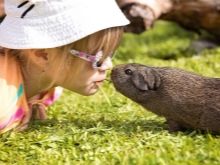


Having familiarized yourself with the positive aspects of guinea pigs, you should study the negative aspects.
- Guinea pigs are not always trainable. But even the most wayward individuals can learn a few tricks.
- Quite often they can be intrusive. So the pigs beg for food and attention.
- Guinea pigs are quite noisy. Throughout the day, they can make many different sounds, such as whistling, screeching, or grunting. In addition, each individual sound made by the animal has a certain meaning.
- Animals are very active in the morning. They are ready to scatter sawdust around the cage and food that will have to be cleaned daily.
- Starting guinea pigs for a walk, the owners need to be prepared for broken wires, furniture and other things.
- While walking around the apartment, the guinea pig can relieve itself anywhere.
- Guinea pigs are afraid of the cold and extreme heat and can catch a cold even with a slight draft.
- By their nature, sea rodents are herd animals. They do not tolerate solitude, therefore, they require several relatives nearby.
- These are very shy rodents. With frequent frights from their owner, they may lose confidence in him.
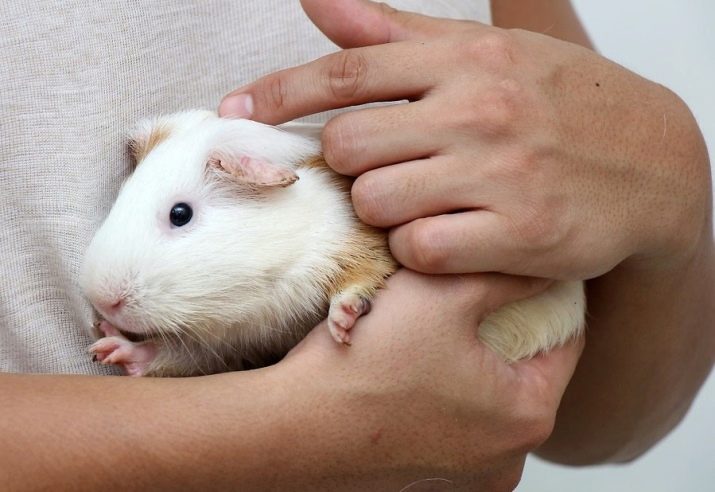
Suitable housing
Most of the time, rodents living at home are in their own territory, where they experience a sense of comfort and safety. It is advisable for them to purchase a separate home.
- Cell. The most common option for housing guinea pig housing. The selected cell must be spacious in size. The pallet of the rodent's dwelling should be made of plastic. The bottom of the dwelling should not have a lattice base, a small paw of the animal can fall into the slot, because of which the animal will be damaged. When choosing a home, there is no need to buy two-story models. Guinea pigs do not jump and do not rise to a height. Even if the animal manages to climb onto the second tier, it will not be able to go down. And jumping, it can damage the foot. Thanks to the lattice walls, the cell is perfectly ventilated. Separate locks on the doors do not allow the rodent to get out.
The only drawback is the daily cleaning of the area near the cage, as guinea pigs throw sawdust, food and garbage through the grates.
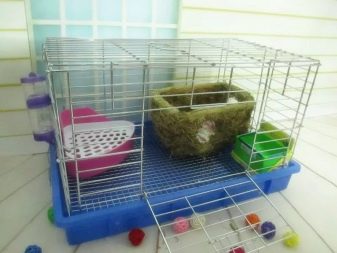
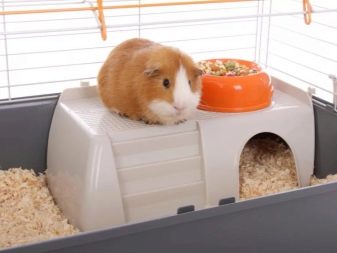
- Terrarium. A pretty good option for keeping a guinea pig. The main thing is that the sides of the container are made of metal mesh, and not of glass. An important advantage of the terrarium is the absence of garbage around. It is strictly forbidden to use a terrarium made entirely of glass. In them, the animal will be uncomfortable due to insufficient oxygen circulation, and the litter at the bottom will be constantly wet.
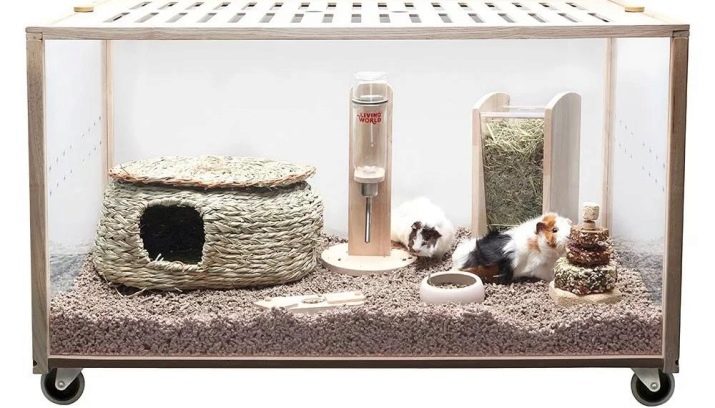
- Aviary. Some apartment owners, who allow living space, prefer to use just such an option for a house for rodents. The main thing is that the wall height should be at least 40 cm, otherwise the guinea pig will easily go for a walk.
It is important to remember that this kind of housing is not suitable for houses where, in addition to the rodent, cats or dogs live.
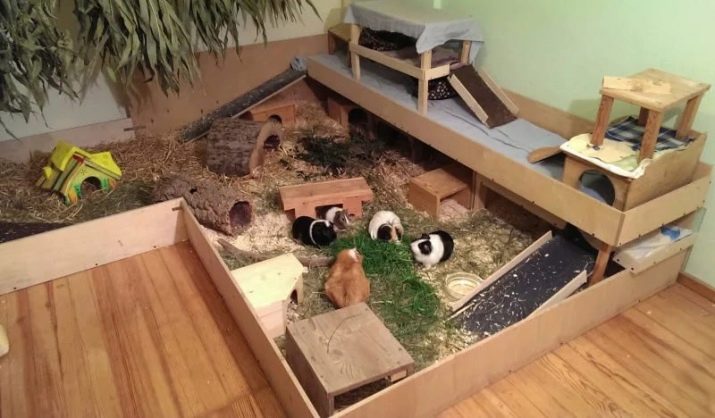
- Dune. As a dwelling for rodents, it is used quite rarely, mainly used for their transportation. Zoologists also do not recommend the use of such containers for keeping small animals. In terms of size, the dunes are very small and cramped. The air inside is very limited, which makes rodents uncomfortable.
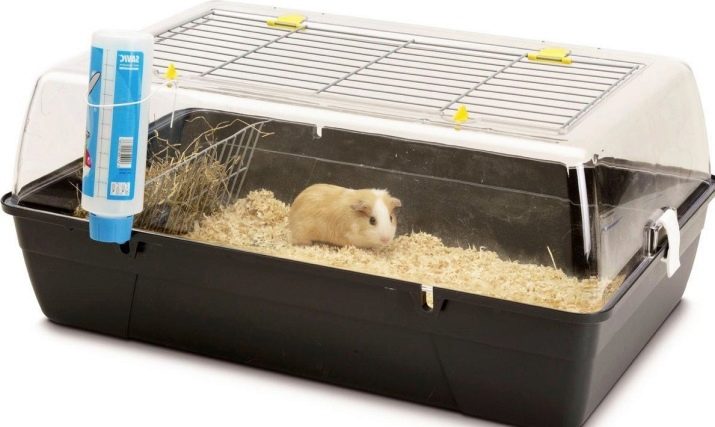
Where to place?
After acquiring a house for a guinea pig, it is very important to determine a suitable place for it. It should be light, because it is very important for a guinea pig to get enough light. But in natural light, it’s important to remember that Guinea pigs do not tolerate direct sunlight, especially in the warm season.
In winter, it is strictly forbidden to place the rodent's dwelling near the battery. Guinea pigs are very sensitive to hypothermia and drafts, so their homes can not be placed at the front door and in ventilated rooms.
To the rodent was not bored, his home must be located in the room where people are most often. If the room often hosts noisy evenings, it is necessary to put a decorative box with a roof in the cage of the rodent, where the animal can hide and take a breath.
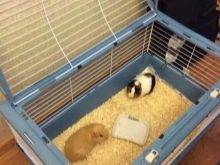
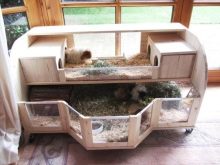
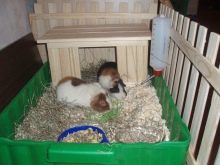
How to equip?
Quite often, acquiring a home for a small rodent, sales consultants offer to purchase a number of additional accessories, which, in their words, are extremely necessary for the animal. It will be difficult for a novice owner to navigate on the spot in the need for a particular thing, so they can purchase completely useless goods. To create the necessary coziness and comfort for the animal, you need to purchase only a few things.
- Feeder. On the shelves of stores laid out floor and hanging models of food tanks. Guinea pigs should choose hanging containers.
- Sennitsa. Hay is the staple food of small rodents, and they need to be folded into a separate container rather than scattered along the bottom of the dwelling.
- Drinking bowl. Suspended models would be the most suitable option, otherwise the entire bottom of the cage will be wet and the animal wet.
- Decorative house. Guinea pigs, like any other pet, need to have a secluded place where she can hide and take a break from unnecessary attention.



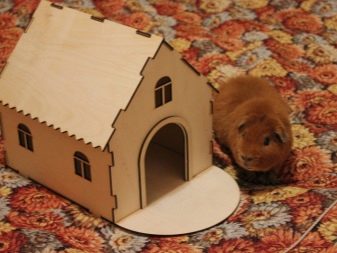
In addition to the elements without which the guinea pig will not be able to survive in any way, an additional series of accessories is supposed to allow the animal to conduct training or just play:
- cubes and balls;
- tunnels and shelter;
- hanging hammock;
- sunbed;
- salt stone.
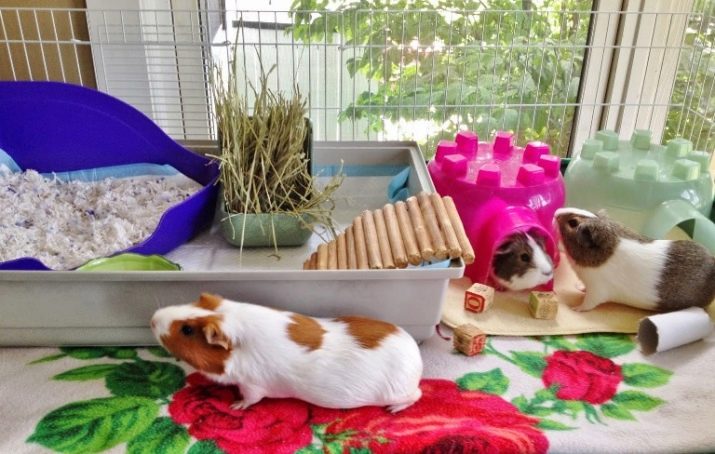
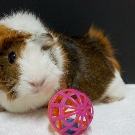
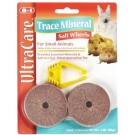
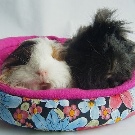
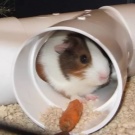

It is strictly forbidden to install a running wheel in the cage and purchase a walking ball.
Guinea pigs are inherently not adapted to move in these accessories; when used, they can get a fracture of the legs and even damage the spine.
Feeding rules
The quality of care for guinea pigs is largely dependent on their nutrition. Unfortunately, inexperienced owners pay too little attention to this issue. Therefore, they get only dry food for rodents, suggesting that the elements contained in its composition are ideal for guinea pigs. Only few people know that these charming animals prefer to eat hay.
Next, it is proposed to familiarize yourself with the main products that should be in the diet of guinea pigs.
- Hay.
- Green grass - dandelions, nettles, burdock, lettuce and chamomiles.
- Fresh vegetables. Guinea pigs are very fond of pumpkin and zucchini. They would like to eat carrots, cucumbers, beets and tomatoes.
- Small twigs. It is better to choose raspberry and blueberry bushes. Branches of apple and pear will be a special delicacy for this rodent.
- Berries and fruits, but exceptionally fresh. For example, bananas, cherries, strawberries, apples.
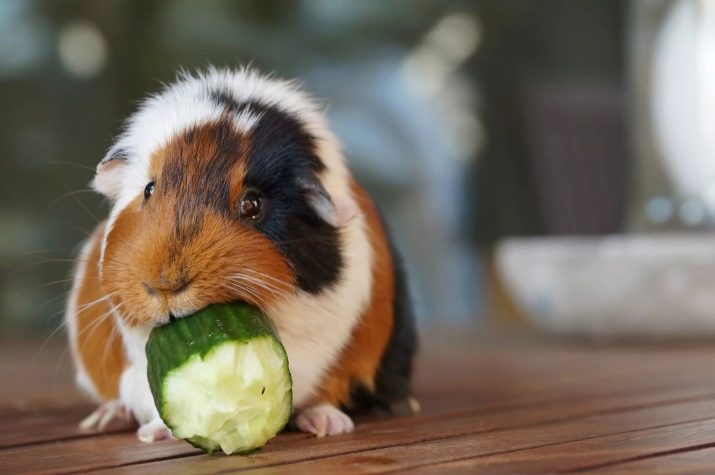
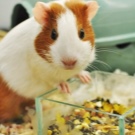
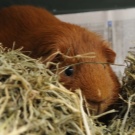
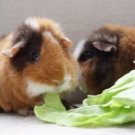
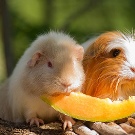
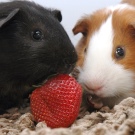
With a detailed review of dry food for rodents, experts were unable to determine its usefulness for guinea pigs, although many owners include this feeding in the ration of the animal. The main thing is to remember that dry food is quite high-calorie, and with its frequent use, guinea pigs begin to grow very fat, which negatively affects their health. The animals themselves will not be able to lose weight on their own, as they lead a sedentary lifestyle.
If you want to treat a small rodent with a delicacy You can give him nuts, but not more than three times a week.
It is strictly forbidden to give pasta to guinea pigs, sour-milk products, fish, sausages, potatoes, sweets, pastries, eggs and mushrooms.
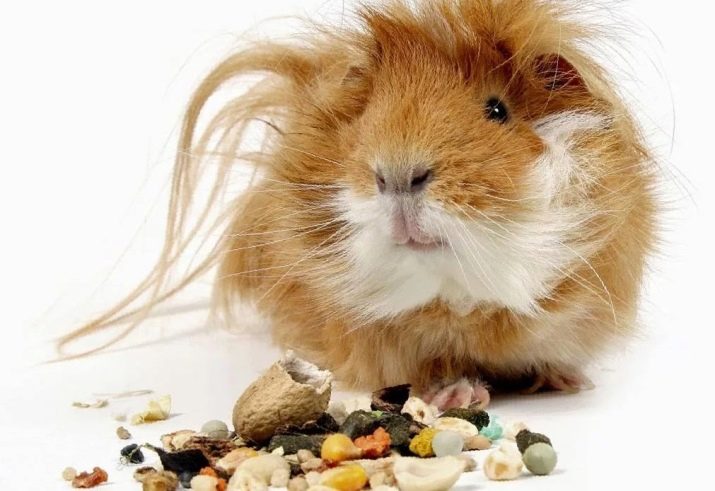
The feeding procedure itself also has certain rules.
- In no case should you leave the animal without food. If the rodent remains hungry for 20 hours, processes of an irreversible nature begin to occur in his body, which can lead to the death of the animal.
- Fresh hay should always be located in a specific place in the cage. If it ends, you need to put a small bunch.
- Vegetables and fruits are given to the animal no more than twice a day.
- The diet of a guinea pig, like any animal, should be varied. Therefore, it is recommended to alternate different types of vegetables in its menu.
- In winter, due to the lack of fresh grass, guinea pigs need to eat crops.
- Guinea pigs cannot be overfed. Their daily rate is 30% of their own weight.
- The introduction of new products in the diet must be done gradually, constantly monitoring the condition of the animal.
- Guinea pigs consume little water. But, despite this, the liquid in the drinking tank should always be purified and boiled.

Hygiene and bathing
The main part of guinea pig care is to comb out the hair daily. This procedure allows you to keep the hairline of the animal clean. It is enough to wipe the stained paws with a damp cloth. It is also necessary to carry out daily cleaning inside the rodent's house, to get rid of undernourished food.
Bathing a guinea pig is necessary only in the most extreme cases. Water procedures cause great stress in the animal. But if you still had to resort to them, it is important that the water in the bathing tank is warm. And the procedure itself should be carried out in a heated room, where there are no drafts. As a detergent, shampoo for cats and dogs is suitable. For swimming, a small container with a minimum amount of water is used.
Extraneous noises should not occur during the bathing process, otherwise the animal may be frightened and scratch the wearer.
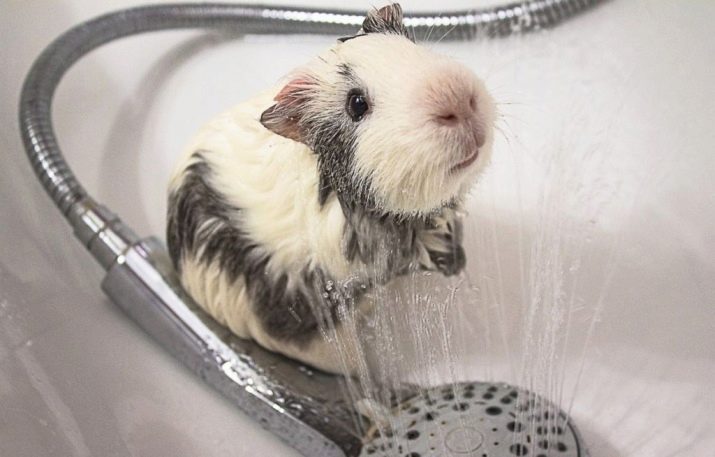
After washing, the animal should be wrapped in a soft towel and held in your hands until the coat is completely dry. It is strictly forbidden to use a hair dryer, as a loud sound can frighten a helpless rodent.
It’s important for novice breeders to remember that Guinea pigs under one year old are strictly forbidden to bathe. Their fragile body may not withstand this procedure.

Disease and Vaccination
The correct maintenance of guinea pigs at home allows you to avoid various diseases. If suddenly the care does not meet the required standards, the animal may encounter digestive problems and colds. The following is suggested to get acquainted with the symptoms of the development of ailments:
- intense thirst;
- sticky wool;
- coughing and shortness of breath;
- lethargic state, long lying with closed eyes;
- the appearance of parasites in the coat;
- sores on the skin;
- loose stools.
If the first signs appear, the guinea pig should be shown to a doctor.
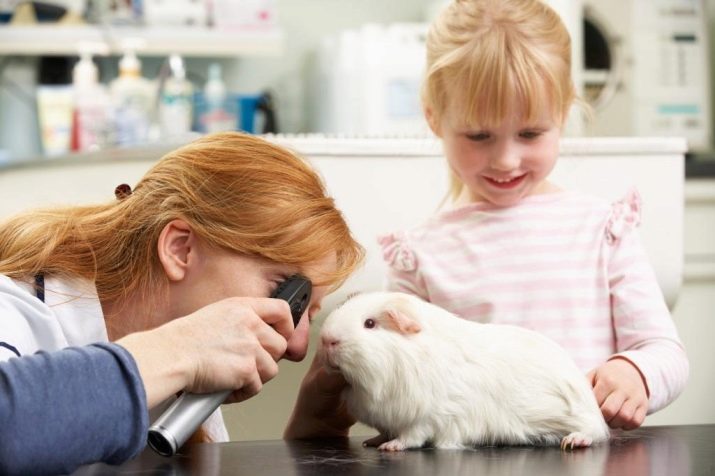
Based on the knowledge and experience of breeding dogs and cats, novice rodent breeders ask about the need for vaccination of mumps. In fact, they do not vaccinate guinea pigs.Only in some cases, veterinarians can offer to vaccinate an animal from bordethediosis. The vaccine does not protect the rodent from infection, but softens the process of the disease.
It is important to know that when buying a new guinea pig it is necessary to place it in the quarantine zone for several weeks, and only after that transfer the animal to a common cage with other pets.

Training and games
Do not believe the arguments that guinea pigs are boring rodents that can only eat and sleep. In fact, they are very active and ready to play with their master. By their nature, these rodents are quite smart, easily trained to do different tricks.
Before you begin to actively engage with guinea pigs, it is necessary that she is used to the new owner, she begins to trust him. For this, the owner will need to devote a lot of time to the small pet, so that he begins to trust the owner.
- For several days, the owner of the animal should calmly approach the cage with the guinea pig and gently talk to her, so the animal will begin to get used to his voice.
- The next stage of taming is a hand treat. If the guinea pig begins to trust a person, she calmly approaches him and picks up food. The main thing is not to make sudden movements at this moment. After a few days, the rodent himself will begin to run up to its owner and check if he brought a tasty treat.
- After the first two stages, the owner can try to pull the guinea pig out of the cage and maintain it for some time in his arms. If the animal is scared, just pat it on the back, while gently talking to him. After the rodent is convinced that there is no danger, he will relax and will enjoy contact with the person.
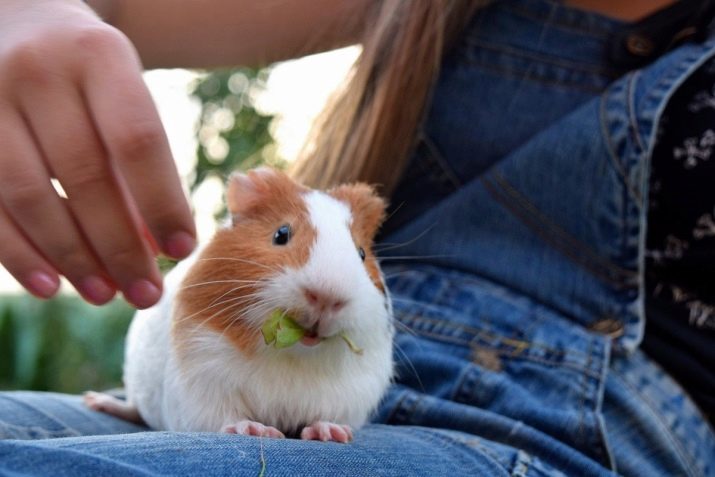
It's very interesting to play with a guinea pig. Fun pastime in many respects reminds development of kids. The animal with great pleasure will get pieces of goodies hidden in different parts of the cage. A ball of rustling paper will attract the attention of a rodent, so you can play some kind of football with it.
Having felt the friendly connection between the guinea pig and its owner, you can begin to train the animal. As an encouragement, like any other animal, it is suggested to give your favorite treat.
With the right approach, it will be possible to teach the guinea pig to respond to its name, as well as turn from side to side.
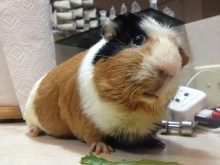
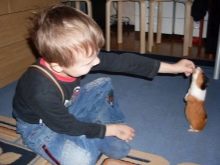
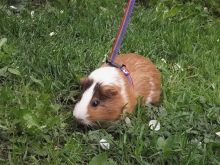
Useful Tips
Many people, having decided to get a guinea pig, suggest that the rodent does not require special care. But, despite this, it requires a certain care of warmth and attention, which should be provided as much as possible by the owner. The novice owner needs to know a few basic rules, thanks to which the guinea pig will be able to feel cozy, comfortable and safe.
- Before acquiring a house for the animal, it is necessary to determine its permanent location in the house.
- If other types of pets live in the house, you should carefully consider the choice of housing for the rodent. Aviaries and terrariums immediately step aside.
- For novice breeders, it is important to remember that guinea pigs prefer room temperature, they do not like plentiful heat and severe frosts.
- It’s quite difficult to properly maintain a guinea pig. In order not to stray from the right path, it is best to paint an hourly schedule for caring for her.
- By their nature, guinea pigs are herd rodents. They do not like loneliness. Therefore, it is best to purchase several relatives at once. Of course, for starters, you can get one individual, but the internal state of the rodent will improve significantly when it sees a fellow next to it.
- Guinea pigs at home feel extremely easy and free, but you can’t limit their space to just a cage. A rodent needs daily walks around the room.
- During walks of the guinea pig, the owner needs to carefully monitor the animal, otherwise it may be afraid of harsh sounds and even get hurt.
- Guinea pigs must be looked after every day - comb the hair, clean the territory of the animal and be sure to feed it with fresh food.
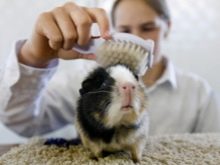
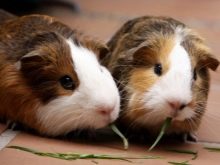
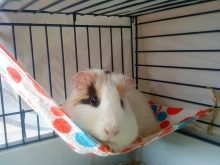
More information about guinea pigs is waiting for you in the video below.
